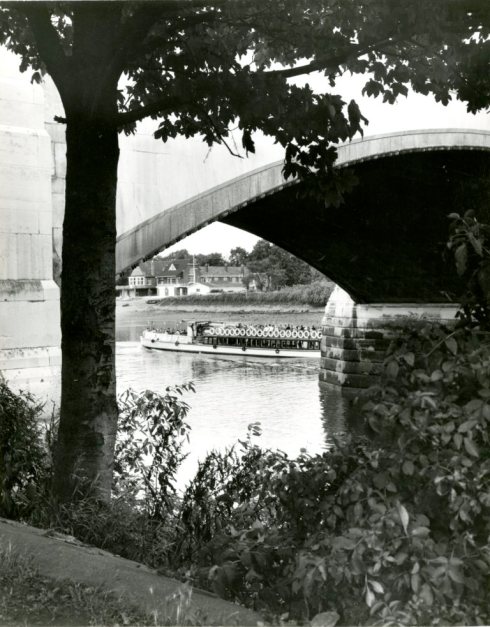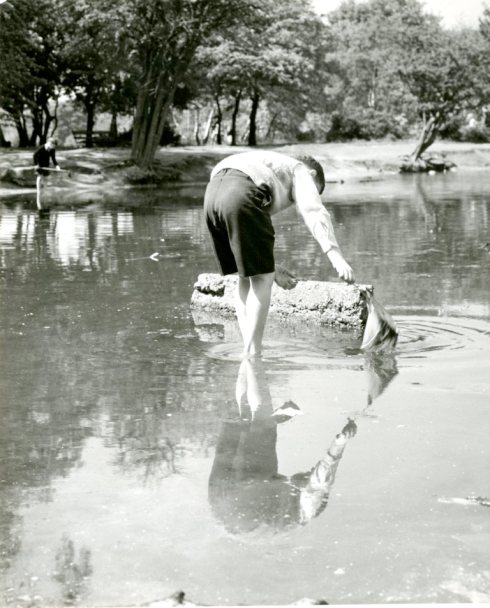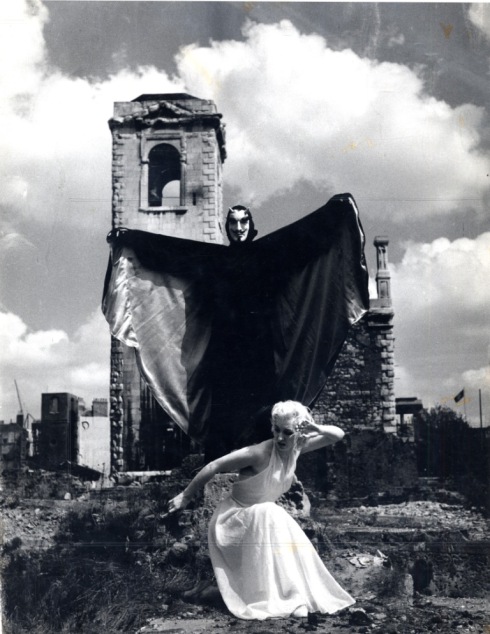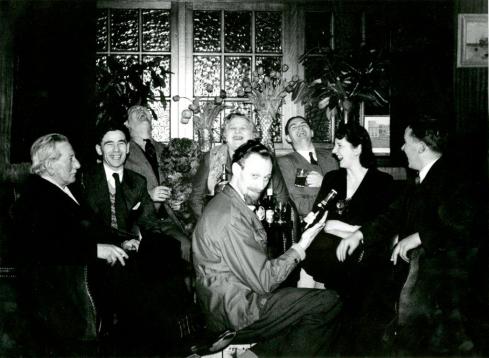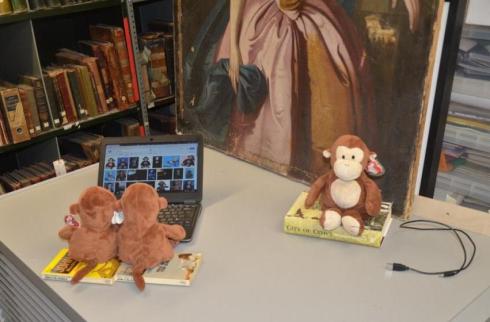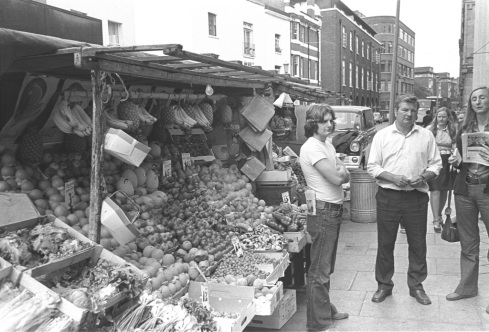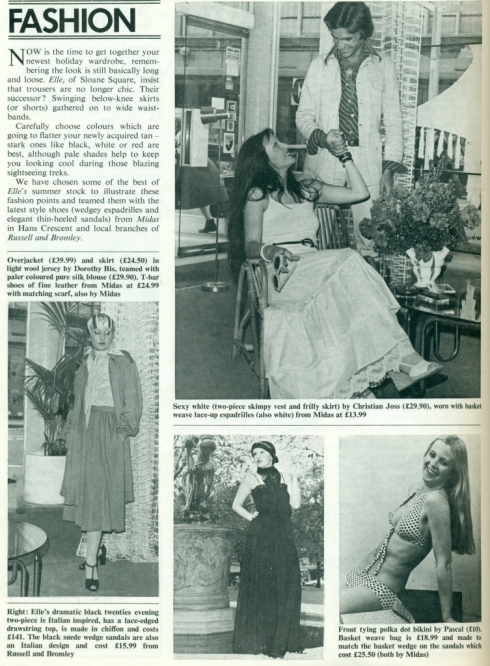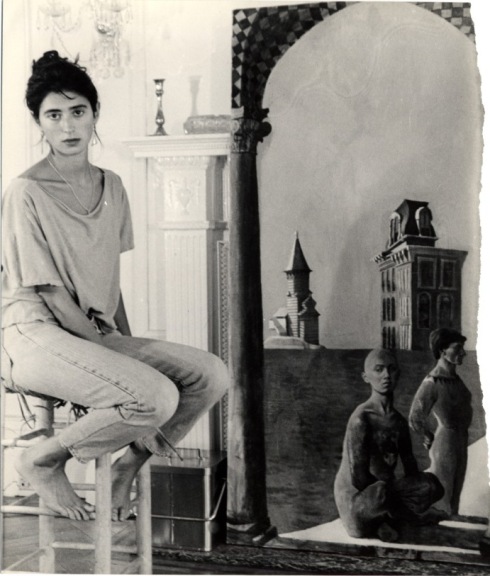I’ve been thinking about doing a new Bignell post recently, but what decided me was a chance meeting last Saturday which ended up with me standing inside “The Manse” as Bignell referred to the house in the Moravian church yard (the former home of the designers Mary and Ernest Gillick) which was his last address. I only met Bignell once, in passing, and recall him as a tall man, who would have been close to the ceiling in the living room where I stood. It is possible that this picture, which has a sticker with the Manse address on the back was taken there.
The picture (Morning Reflections) was in the RPI international print exhibition in 1991.
There’s no actual theme to this post apart from the colour, and than the hope that these pictures are new to you. For most of his career Bignell took pictures in black and white and only used colour when necessary. Like here:
What better subject than a rainbow? Or perhaps below.
The picture is actually entitled Chelsea Sunset.
Below, the photographer’s equivalent of a still life, entitled Fallen Tulip.
From a minimalist view of a flower to a luxuriant view of vegetation.
And below, a frog.
These nature pictures might be the professional photographer’s version of holiday snaps. It seems to me that Bignell regarded his main body of work in black and white as the main expression of his skill as a photographer, and his main subject as people. Colour and nature were a kind of a vacation from his day job.
Most of these pictures are comparatively late work, taken in the 1970s and afterwards, so I guess they were also his way of relaxing after years of work in the city streets and in various studios.
Almost all his colour pictures are landscapes of some kind, like this shoreline.
Beach scenes, boats:
And features on the beach.
I had to crop those last two to scan them, hopefully not ruining the composition in the process.
The picture below seems to relate to his Wimbledon series although the body of water looks bigger.
In any case, the picture of a group of people fishing is equally tranquil.
Below, this creased print is of an unknown urban location.
Is it even in the UK?
This one certainly is, Battersea Park 1960.
I scanned most of these images this week, searching through the new Bignell drawers for colour pictures once that theme emerged. I found some nice black and white pictures too, which we’ll come back to later. I also looked on our server and found this picture, one of three which must have been part of a session I’ve looked at before. These were kept separately. Perhaps they were rejects, or out takes, as they are the only ones taken in the evening. You can look at the day time pictures in the post Bignell and the Goddess (link below). Bignell was in Turkey for that series.
I never gave the name of the woman as I wanted to concentrate on the pictures. I could tell you now, but do you really want to know? (Don’t worry, it’s not a particularly big deal.0
It occurs to me now that this image of a woman in white robes, links us to next week’s post, which will be the latest in an annual series.So a good point to stop.
Anyway, this week’s low key post is also a response to the mini-summer we’ve had this week. I should add that by visit to Bignell’s old house was facilitated by Ian Foster who has a pop-up exhibition featuring photographs of the King’s Road in the 1960s in a nearby shop front, the former Carphone Warhouse. It’s worth a visit if you’re in the neighbourhood.
Finally, it occurs to me that there are quite a few Bignell posts, which I hope have helped to bring his work to a wider public. And here they are:
John Bignell and the celebrities (2012)
That’s entertainment: Bignell at the Palace (2012)
Bignell’s world (2013)
Bignell and the Goddess (2013)
Portrait of the artist as a young dude (2013)
Bignell meets Hedderly (2013)
Bignell at the pub (2014)
Bignell’s people (2014)
Christmas Days: a little bit of Bignell (2014)
Bignell and women: models, friends and strangers (2015)
Sarah Raphael: a session with Bignell (2015)
Bignell at work (2016)
Christmas Days:Bignell – a childhood in the 50s (2016)
Bignell’s world of the strange: an anthology (2016)
Bignell in Wimbledon: sunny days (2017)
Water: Bignell’s travels (2017)
Bignell’s travels: back streets and backwaters (2017)
I think that’s all of them. Bignell pictures also pop up inside other posts . You can’t read this blog without coming across them, and no doubt there will be more.
Thanks to John Bignell and his family for all the pleasure his work has given us.








































